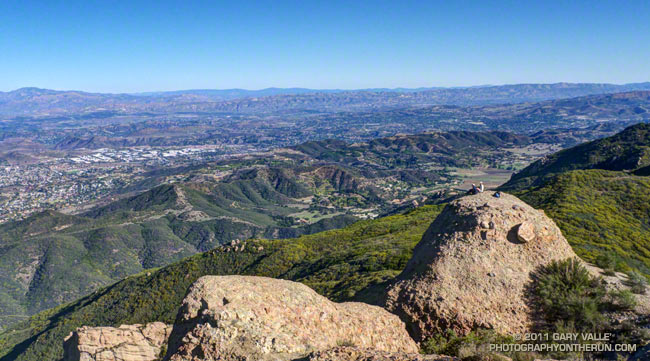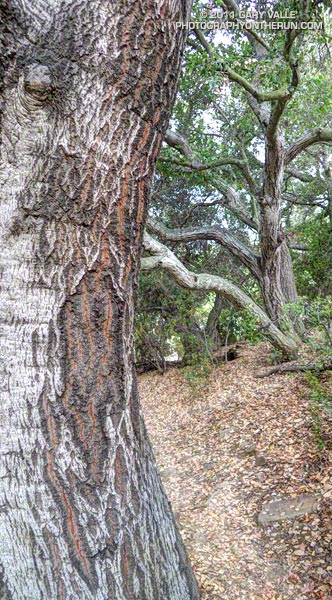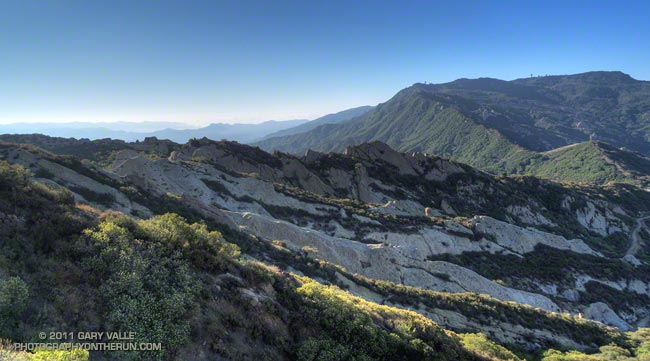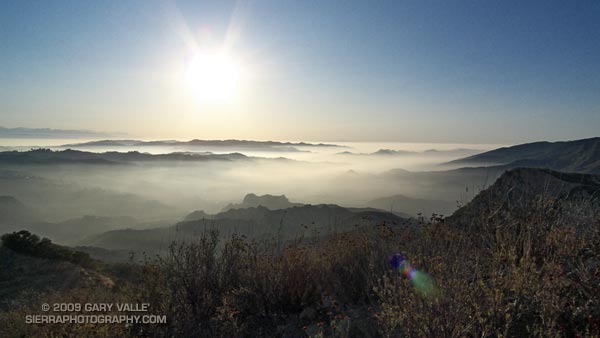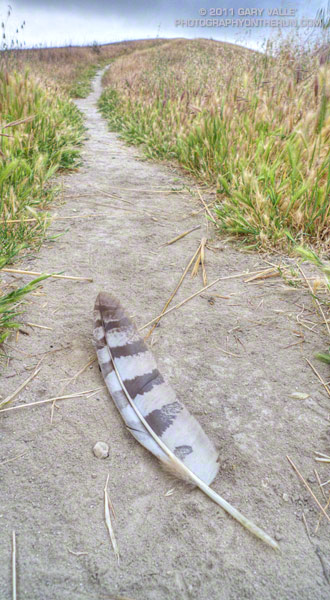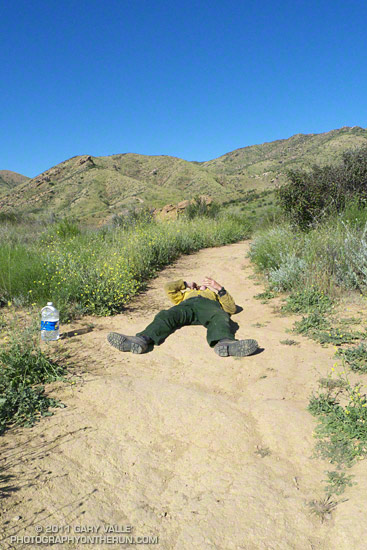
This intricate feather was caught on a bristly stalk along the Secret Trail (Calabasas – Cold Creek Trail). The slightest breath of wind would jostle its branches and branchlets. I found I was holding my breath, waiting for the still moments when I could take a photograph. The feather is smaller than the photograph suggests, perhaps 1.50″-1.75″ in length.
There are several types of bird feathers, the most familiar of which is probably the contour feather. The Feather on the Modelo Trail is a contour feather. In a sense contour feathers form the outer shell of a bird, defining its form and coloration. Wing and tail feathers are contour feathers. The fluffy feather with a familiar name — the down feather — provides insulation.
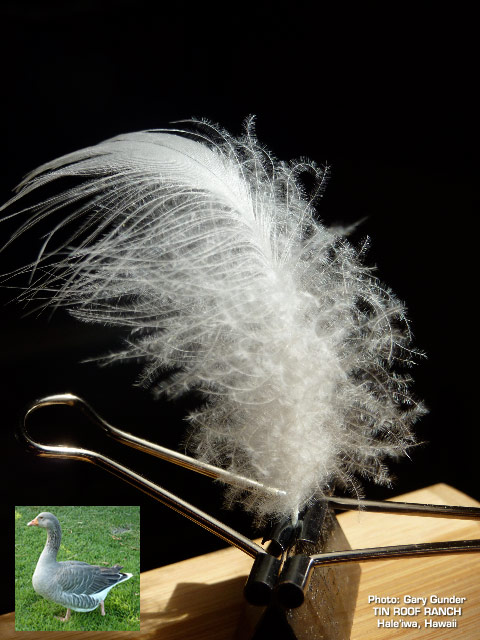
The feather found along the Secret Trail is a semiplume feather. A semiplume feather looks like it is a blend of a contour feather and a down feather, and has some of the characteristics of both. Like a contour feather it has a supportive shaft, but like a down feather it has filamentary branches (barbs) and branchlets (barbules). This combination helps to fill out the bird’s shape, and also provides additional insulation.
The barbules of contour feathers have hooks (barbicels) which join adjacent barbs to form the blade-like vanes of the feather. The barbules of semiplume and down feathers do not have hooks. This allows the barbs of the feather to spread in three dimensions and more easily fill a space. Here’s a closer view of the barbs and barbules of the Secret Trail feather.
To see how the Secret Trail feather compares to other semiplume feathers, I asked long-time climbing, kayaking, and running partner Gary Gunder — now living the good life on the North Shore — if he could take some photos of feathers from some of the birds at Tin Roof Ranch. Courtesy of Gary, here are photos of semiplume feathers from a chicken, turkey, and goose.
For more about feathers and birds see Feather Structure on the Cornell Lab of Ornithology All About Birds web site.
P.S. I asked Gary how his running is going, and he replied, “I run every day… across the Kamehameha highway to go surfing!”
